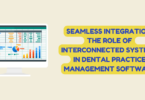
With cybersecurity systems getting better with each passing day, cybercriminals have started to target humans more often. They know that it is easier to target your employees as compared to passing through the defenses of your cybersecurity systems. That is why we have seen an exponential increase in the number of social engineering attacks such as phishing and spear phasing in recent years.
So, how can you protect your employees, users, and other stakeholders from this onslaught of phishing attacks? By investing in cybersecurity awareness programs. Despite this, very few businesses even have a cybersecurity awareness program, which makes them more vulnerable to cybersecurity attacks targeting their employees.
This happens due to many myths surrounding cybersecurity awareness, which prevents businesses to take cybersecurity awareness seriously. In this article, you will learn about six common cybersecurity awareness myths you should stop believing in today.
1. Cybersecurity is The Responsibility of the IT Department
By far, the most common myth surrounding cybersecurity is that it is only the responsibility of the IT department. You might have heard your colleagues from other functional units say something like this, especially when you tell them about the initialization of the cybersecurity training program and ask for their input.
The first step you need to take to make cybersecurity a priority is to make it a shared responsibility. Ask all the employees to play their part irrespective of which department they belong to. Cybersecurity is not just an IT-specific problem; it has become a business problem. The quickly your business can understand this, the better.
2. Cybersecurity Awareness Program Is Enough
Even if your business stop believing in all the myths surrounding cybersecurity awareness then, you are more likely to fall for this. If you have already had a cybersecurity awareness program, you might be considering it the solution to all your cybersecurity woes. Unfortunately, this is not the case.
Your cybersecurity is not something that you can set it once and forget about it. It is always a continuous activity that needs to be performed multiple times a year. The higher the frequency the better. Instead of organization cybersecurity awareness sessions, once or twice a year, you should do it every quarter or every month.
Even then, you need to evaluate the effectiveness of your cybersecurity awareness program to ensure that it is achieving the desired results. Test the knowledge of employees who have participated in a cybersecurity awareness program by launching mock attacks. This will give you a clearer picture of how effective your cybercity awareness program is and what steps you can take to improve its effectiveness.
3. You Can Not Stop Threat Actors
Another myth that has been around for quite some time now is that we can not do anything to stop threat actors. That does not mean that you can not do anything to protect yourself from cybersecurity attacks launched by these threat actors. A cybersecurity awareness program can improve the cybersecurity awareness of your employees making them less vulnerable to cybersecurity attacks.
In addition to this, they can also serve as threat identifiers and can raise a red flag as soon as they detect suspicious activity. By identifying and reporting threats early, your security team can not only react in a timely manner but can also minimize the damage done by a cybersecurity attack. Employees who have cybersecurity awareness are harder to trick for hackers as they won’t get lured with traditional techniques hackers use as they are aware of these tactics in advance.
4. Ensuring Compliance Is Enough
Just because you have managed to ensure compliance with industry standards or regulations does not mean that your job is done. Complying with regulations and security standards is one piece of the cybersecurity puzzle and thinking of it as an entire puzzle is wrong. Compliance is just the starting point, not the finish line. There are many other steps your business will have to take in order to ensure full-proof security.
From ensuring all the security controls are in place to making sure that they are meaningfully contextualized by a comprehensive cybersecurity strategy, which is understood by everyone in your company and implemented properly, there is more to cybersecurity than compliance. Compliance is just like a few boxes you need to tick but does not tell you the reason why each security control is implemented.
5. All Devices Are Under Our Control
With more and more businesses encouraging their employees to bring their own devices, it can multiply the cybersecurity risk of the organization. Irrespective of how good your device management capabilities are, the number of devices connecting to your network can skyrocket very quickly. Soon, it will reach to a point where it will become overwhelming and impossible to manage.
Every new device accessing your network can become a soft target and a ladder for cybercriminals as it allows them to use those compromised devices as a springboard to move laterally throughout the network and target other devices. You need to educate employees about securing their devices. Give them enterprise devices protected by stronger security. Make sure they are fully aware of the usage policies and risks attached to bringing their own devices.
Even if you are allowing your employees to bring their own devices, invest in a unified endpoint management solution. It helps you manage all your devices from a single dashboard and beef up your security monitoring and threat mitigation efforts. This will drastically improve the cybersecurity of your business without having to prevent your employees from bringing their own devices.
6. Managing IT Inhouse is Cheaper
Another misconception most businesses have is that managing IT in a house is much more affordable than outsourcing IT operations. As more and more businesses jumping on the cloud bandwagon, we will see the cybersecurity budget shift away from your IT department. Most businesses will opt for a hybrid cloud or managed service provider to do their bidding.
Cloud adoption will grow which will allow you to save money in the long run. Combine that with other advantages cloud computing brings to the table and it becomes a compelling offer for businesses. That is when businesses would think about outsourcing their cybersecurity and IT management. These service providers have a state of the art infrastructure, relevant expertise, and top industry talent, which makes them a better choice for managing your cybersecurity. Just like an ARK dedicated server delivers top of the line gaming performance, you need to adopt a horse for curses approach to cybersecurity and IT management.
Which cybersecurity awareness myths do you still believe in? Let us know in the comments section below.







You must be logged in to post a comment.